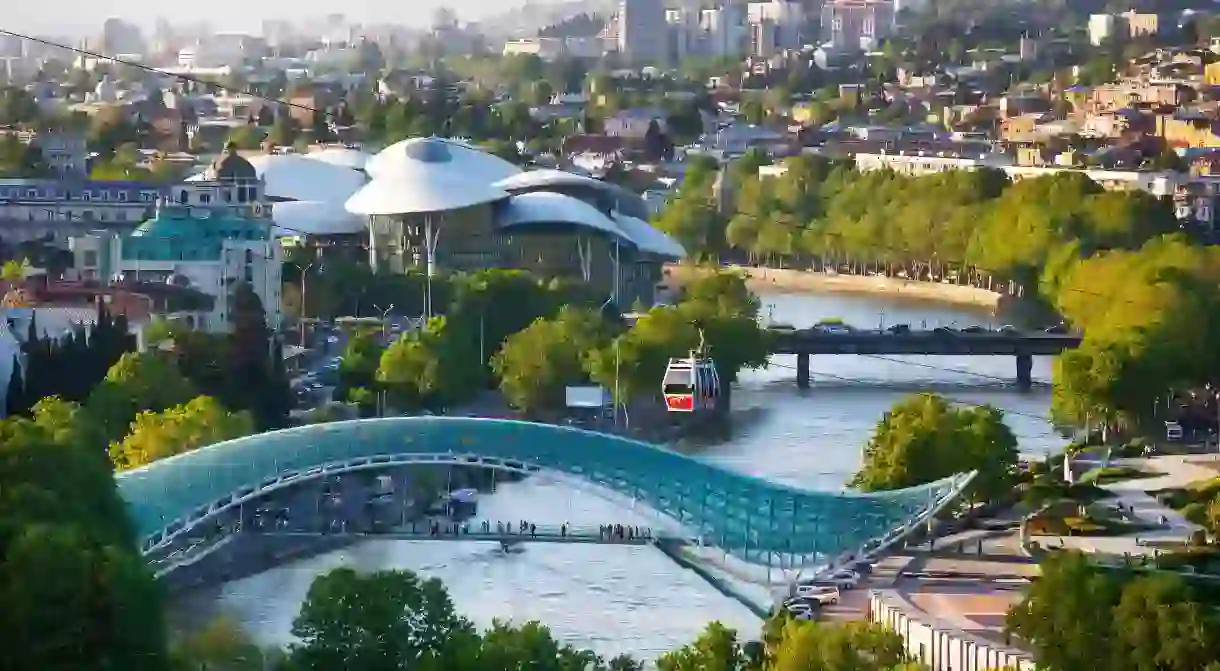The Best Attractions in Tbilisi

Tbilisi is a city of contrasts, where both modern structures and old architecture co-exist. The capital of Georgia has undergone many invasions and been burnt and restored a couple of times, but despite that it still displays turbulent history and rich culture. And besides popular tourists destinations, Tbilisi hides unique gems in the backstreets. Here are the best attractions you can visit on your next trip to the capital.
Keen to visit? You can enjoy a guided walking tour of Tbilisi with Culture Trip on our nine-day small-group Georgia adventure, led by our local insider.
Narikala Fortress

Overlooking the Abanotubani, the oldest district of the capital, the Narikala Fortress dates back to the fourth century when Tbilisi was a Persian citadel. The brick fort sits on a steep hill between sulphur baths and the botanical garden. The St Nicholas Church, inside the courtyard, is a fairly recent construction (1997), but replaces the original 13th-century one, which was destroyed by fire. You can walk up the steep hill from Maidan Square or take a cable car.
Kartlis Deda

Next to Narikala, there’s a big statue of a woman holding a sword and a cup. That’s the Mother of Georgia or Kartlis Deda in Georgian. The aluminium figure rises 20m (66ft) and is a symbol of not only Tbilisi but the country as well. The sword is for those who come as an enemy, while a cup of wine is for those who come as friends.
Metekhi Church

On the opposite side of Narikala Fortress, Metekhi Church is a city landmark, with the statue of King Vaghtang Gorgasali, the founder of Tbilisi. This is where he built his palace and the first church in the area in the fifth century. The church present today is from the 13th century and has undergone reconstruction several times.
Old residential houses
Tbilisi has old residential houses with colourful wooden curved balconies overlooking Maidan Square and Metekhi Church. Doorways take you to inner yards that locals call Italian courtyards, where residents used to gather to gossip, drink and have dinner together.

Peace Bridge
One of the first modern architectural additions to the city is a glass-and-steel structure. Michele De Lucchi, an Italian architect, designed the pedestrian bridge over the Mtkvari River; it opened to the public in 2010. The Peace Bridge connects Erekle II Street, a pedestrian street full of cafés, and Rike Park.

Rike Park
One recreational space in Old Town is Rike Park, which features pools, fountains, a giant chess board and several dozen chairs. During summer evenings, locals and visitors enjoy the dancing fountains accompanied by music and a light show.

Tsminda Sameba Cathedral
The biggest symbol of the Georgian Orthodox Church is the Trinity Cathedral. The cathedral, located on Elia Hill above Avlabari, is visible from almost every corner of the city centre. Construction took approximately a decade and the building opened to the public in 2004. It stands 84m (275ft) tall, including the gold-covered cross above the central dome.

Clock Tower
This fairytale-like clock tower is a relatively new edition to the capital. Made by Rezo Gabriadze, a puppet master and screenwriter, the tower features hundreds of handmade tiles created by Gabriadze himself. Every hour, an angel comes out of a door at the top and strikes a bell with a hammer; at noon and 7pm, you can watch a small puppet show called The Circle of Life.

Stalin’s Underground Printing House
Just outside the city centre, Tbilisi hides a unique underground publishing house from where young Stalin and his colleagues used to spread Soviet propaganda at the beginning of the 20th century. It was built under a well, 17m (56ft) below ground. Activists accessed the room by climbing down the well, but it also had an emergency exit just in case their secret was leaked.

Did you know – Culture Trip now does bookable, small-group trips? Pick from authentic, immersive Epic Trips, compact and action-packed Mini Trips and sparkling, expansive Sailing Trips.













